#ibm blockchain
Explore tagged Tumblr posts
Text
These Technologies Will Move the World's Money – You Better Get Used to It
Blockchain isn’t the future—it’s the infrastructure being built right now to move the world’s money. Stand up on this. Take this in. These technologies are not hype—they’re infrastructure. They’re being built right now to move the world’s money. You just saw it: XDC + JPMorgan Chase + TradeFinex – Real-world trade finance on blockchain. Algorand (TPAOS) – Powering CBDCs. Yes, Central Bank…
#Algorand#Blockchain#CBDC#Constellation DAG#Crypto Adoption#Crypto News#decentralized finance#financial infrastructure#generational wealth#Hedera#Hyperledger#IBM#JPMorgan#Overledger#Quant#Ripple#Stellar#XDC#XLM#XRP
0 notes
Text
Securing Cryptocurrency with Quantum-Resistant Cryptography
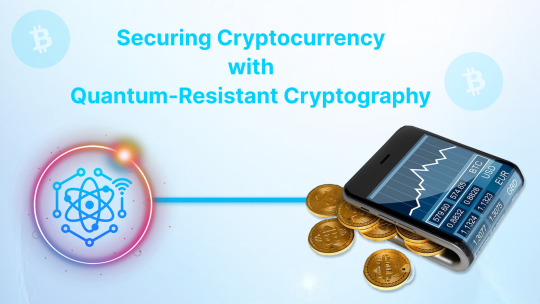
Learn how cryptocurrency platforms are adopting quantum-resistant cryptography to safeguard blockchain networks against the growing threat of quantum computing.
Introduction
The emergence of quantum computing is a double-edged sword for innovation, especially for the cryptocurrency industry. With blockchain networks relying on public-key cryptography, the potential of quantum computers to break these systems calls for the adoption of quantum-resistant cryptographic measures. Here's how cryptocurrency platforms are preparing for this shift.
Why Quantum-Resistant Cryptography Matters
Threat to Cryptocurrency Security:
Most blockchains, including Bitcoin and Ethereum, rely on RSA and ECC, vulnerable to quantum algorithms like Shor's.
This vulnerability threatens wallets, transactions, and the network as a whole.
Timeline for Quantum Threat:
Experts believe scalable quantum computers may be developed within 10-20 years and will pose a real threat to today's cryptographic standards.
Advancements in Quantum-Resistant Cryptography
Post-Quantum Cryptography (PQC):
The main algorithms are lattice-based systems, hash-based signatures, and multivariate polynomial solutions.
CRYSTALS-Kyber and CRYSTALS-Dilithium are NIST finalists for standardization and can be used for cryptocurrency.
Zero-Knowledge Proofs (ZKPs):
Emerging Quantum-resistant ZKPs shall introduce an added advantage to privacy in blockchain applications while keeping security uncompromised.
Hybrid Systems:
A hybrid approach transitions between conventional and quantum-resistant cryptography, allowing a gradual adaptation of blockchain networks.
Blockchain Platforms Leading the Pack
Quantum-resistant Blockchains:
QRL and QANplatform are innovators developing quantum-resistant properties within their protocols, starting with embedding XMSS properties within their protocols.
Hyperledger is also introducing enterprise blockchain solutions with a quantum-safe approach.
Mainstream Cryptocurrencies:
Bitcoin and Ethereum developers are seeking upgrades to incorporate quantum-resistant cryptographic measures.
Cardano has also indicated a proactive approach to the incorporation of quantum-safe algorithms.
Initiatives Fueling Innovation
Interdisciplinary Alliances:
Quantum computing scientists, cryptographers, and blockchain developers are working together to build powerful quantum-resistant standards.
NIST and ETSI are pioneering the efforts.
Collaboration with Quantum Computing Enterprises:
Enterprises such as IBM, Google, and Rigetti are assisting blockchain networks by conducting quantum simulations and testing post-quantum cryptographic protocols.
Adoption Barriers in Quantum-Resistant Solutions
Higher Computational Load: Quantum-resistant algorithms are very resource-intensive and could slow transaction speeds and increase energy consumption.
Compatibility Issues: Cryptocurrency platforms face the significant challenge of updating existing systems without disrupting operations.
Standardization Gaps: Many promising algorithms are still in testing, delaying widespread implementation and industry-wide adoption.
The Future of Cryptocurrency
Standardization Efforts: NIST's recommendations by 2025 will be critical to guide cryptocurrency platforms toward secure quantum-resistant solutions.
Proactive Transitioning: Leading exchanges and blockchain projects are recommended to adopt hybrid cryptographic systems ahead of the final appearance of threats from quantum technologies.
Funding and Research: Governments as well as various organizations are becoming more interested in quantum-resistant technology for the safeguarding of essential systems, even cryptocurrencies.
Conclusion
As quantum computing advances, cryptocurrency platforms must prioritize the adoption of quantum-resistant cryptography. These efforts are essential to secure blockchain networks, protect user investments, and maintain trust. While challenges remain, ongoing research and collaboration ensure cryptocurrency is prepared for the quantum era.
#Blockchain#CryptoNews#Bitcoin#Ethereum#QRL#IBM#Innovation#CryptoSecurity#BuyCrypto#CryptoExchanges#CryptoStrategy#CryptoMarket#CryptoInnovation#CryptoTax#DeFi#CryptoFuture#Tether#CryptoRegulation
0 notes
Text




see prior post: The "old" NESARA / GESARA QFS "transcended the internet and the blockchain" if memory serves...
0 notes
Text
Explore Cryptography Applications for Secure Data Exchange

Cryptography applications: Data security and secure communication
In the digital age, cryptography is essential for data security. Cryptography hides our most sensitive data, from government secrets to personal messages. Cryptography provides some privacy when shopping online or storing trade secrets.
Cryptography builds trust in online transactions:
Include these:
Secrecy: Only the intended recipient can access encrypted data.
Integrity: An encrypted message cannot be altered in storage or transit between the sender and receiver without detection.
The sender of encrypted data cannot deny sending it.
Communication authenticity: Sender, receiver, and information origin and destination are verified.
Key management: Safeguarding data encryption and decryption keys and related tasks like key length, distribution, generation, rotation, etc.
Basic cryptography knowledge
Different methods have been used by cryptologists to encrypt messages and private data. Cryptographic algorithms have advanced, but the basics are the same.
Basic cryptography uses a secret key or keys to encode plaintext into ciphertext, which can be decoded back into plaintext.
Codes for cryptography
Encryption and decryption use cryptographic algorithms. These algorithms create secret keys to convert plaintext to ciphertext and vice versa. RSA, AES, and ECC are well-known cryptographic algorithms.
The majority of cryptographic algorithms generate keys by multiplying large prime numbers. Modern computers can multiply, but factoring large numbers back into two large primes is nearly impossible. Lower-key cryptosystems can be reverse-engineered quickly, but even the fastest supercomputers would need hundreds to hundreds of thousands of years to brute-force today’s stronger cryptographic algorithms. Random numbers are used in elliptic curve cryptography to create stronger keys that even next-generation quantum computers cannot break.
Management key
Encryption and decryption require key management in every cryptosystem. Generating, storing, and sharing encryption keys securely is key management. The security of encrypted data depends on proper key management, as weak or stolen keys can compromise any cryptosystem. Key management requires key sizes, randomness, and storage.
Symmetric security
Symmetrical cryptosystems use one key for encryption and decryption. Each user must have the same private key for these systems to work. Share private keys via a trusted communication channel like a private courier or secured line or, more commonly, a secure key exchange method like the Diffie-Hellman key agreement.
This encryption is faster and more efficient than others, despite its single-key vulnerabilities. AES, 3DES, and DES are popular symmetric encryption algorithms.
Unsymmetric encryption
Asymmetric encryption (public-key encryption) uses a public and private key. Public keys encrypt, private keys decrypt, and each user has their own key pair. Public-key cryptography uses two encryption keys to increase security, but it reduces efficiency. Asymmetric cryptography algorithms include RSA, ECC, and SSH.
Uses of cryptography
Communicate securely
Internet security is a common cryptography application. Web browsers and servers use cryptographic protocols like TLS and SSL to establish secure connections. This secure channel keeps browser-website data private and uninterceptable.
Communication apps like email and WhatsApp use cryptography for end-to-end encryption (E2EE) and privacy. E2EE lets only the sender and recipient decrypt and read messages, making third parties including users’ service providers unable to access them.
Digital encryption
Encrypting data on hard drives, smartphones, and cloud storage services is a common cryptographic technique. Strong algorithms like AES convert plaintext into ciphertext, preventing unauthorized parties from decrypting sensitive data without the authorized users’ encryption key.
Authentic data
Cryptography safeguards data. Hash functions generate fixed-size hashes (digests) of data, transforming a set of data into a unique numerical hash number. So unique are these hashes that changing a single character or space in the plaintext changes the numerical value. Receivers, applications, and websites can verify data integrity by comparing the received hash to the expected hash and ensuring data was not altered during transmission.
Hash functions are also used to verify user passwords without creating a vulnerable client-side database. Online banking services will only store password hashes. Despite stealing a database, a malicious actor could not deduce a user’s password from their hash.
Authentication
Cryptography used in all kinds of business uses digital signatures to verify sent and received data. The documents can be verified or amended with digital signatures, which are generated with a private key that is encrypted using asymmetric cryptography to sign documents. In digital form signed paperwork can be verified by consumers using the public key issued by the sender to ensure authenticity and no tampering.
Non-repudiation
Throughout legislation, not being repudiated ensures the genuineness of messages that are received and prevents recipients from denying their validity. Digital signatures can prove that simply the sender authenticated the message as well as document, establishing non-repudiation. Cryptography-enabled non-repudiation, as seen in data integrity protocols and digital signatures, can verify legally binding negotiations, contracts, and other business transactions.
Exchanging keys
Key exchange is crucial to secure communication, especially in asymmetric cryptosystems. This initial step benefits from cryptography. Another publicly available cryptography milestone, the key exchange method known as the Diffie-Hellman algorithm, lets two parties securely exchange encryption keys over an insecure channel. This prevents eavesdroppers from deciphering encryption keys during key exchanges. Cryptography algorithms like the Diffie-Hellman key exchange protocol enable secure public-key encryption connections without a vulnerable alternative key exchange.
API communication security
A hallmark of Web 2.0 (and beyond), cooperative inter-app operability allows applications and web services to pull data from their respected walled virtual ecosystems, enabling massively expanded functionality of all kinds of apps from embedding social media posts into news articles to sharing critical systems analytics into advanced operational dashboards.
Cryptography protects sensitive data in application programming interfaces (APIs) that enable cross-program communication from eavesdropping and tampering, ensuring that only authorized parties can access it. In sensitive fields like public works and infrastructure, API keys and tokens are used with encryption to protect sensitive data exchanged between applications.
The quantum computer cybersecurity
The rise of quantum computing threatens encryption and cybersecurity. Most modern cryptosystems can withstand the computing power of traditional computers, which would take hundreds to hundreds of thousands of years to brute-force attack present cryptographic algorithms. However, quantum computers could boost today’s computers by orders of magnitude and cut the time it takes to crack even the strongest cryptographic keys from thousands to seconds.
Cryptologists are developing quantum-resistant cryptography to counter theoretical quantum computer attacks on most modern cryptographic algorithms. Quantum-resistant and post-quantum cryptography have as many uses as mainstream cryptography. Most computer scientists agree that major breakthroughs within the next 10 to 50 years will make quantum-resistant cryptography as important as quantum computing.
Blockchain security
For secure and immutable on-chain transactions and updates, blockchain technology uses cryptography. Bitcoin uses cryptographic algorithms to mine and mint new coins, while cryptographic hash functions secure chain blocks. Digital signatures are created and verified using public-key cryptography during transactions. Blockchain uses encryption to create a trustless ecosystem where all actions can be authenticated and verified, encompassing most cryptography principles.
Discover how IBM cryptography protects business data
With cutting-edge technology, consulting, systems integration, and managed security services, IBM cryptography solutions ensure crypto-agility, quantum-safety, and solid governance and risk policies. Your business’s end-to-end encryption protects data and mainframes with symmetric, asymmetric, hash, and other cryptography.
Read more on Govindhtceh.com
1 note
·
View note
Text
¿Son las Blockchain la carrera adecuada para ti? ¡Descúbrelo ahora!

La tecnología Blockchain ha revolucionado no solo el mundo financiero, sino también muchas otras industrias, abriendo un abanico de nuevas posibilidades y carreras. A medida que esta tecnología continúa ganando tracción, muchos se preguntan si una carrera en Blockchain es la adecuada para ellos. Esta decisión no solo implica considerar las habilidades técnicas requeridas, sino […]
Ir a la noticia completa
0 notes
Text

lmao what
Tired of users loading malware into your mainframes? Got tricked into making the mainframe into a blockchain miner? Solve all your problems from bad data with this unique Antivirus Punch Card. Simply run this card through the punch card reader until it is fully integrated into your system. Then your system will reject any bad punch cards from being loaded. Lovingly crafted on a manual keypunch with New Old Stock punch cards. Options: White - Generic 5081 punch card Red - Globe No. 1 5081 punch card Green - IBM United Kingdom 5081 punch card Set of Three - One of each white, red, and green punch cards Note: This is a novelty product. Use in actual card readers at your own risk. This is a lace card, a punch card with every spot punched out, that rejects bad data by breaking apart and jamming the card reader, preventing all data.
this ko-fi store rules
1K notes
·
View notes
Text
The Role of Blockchain in Supply Chain Management: Enhancing Transparency and Efficiency

Blockchain technology, best known for powering cryptocurrencies like Bitcoin and Ethereum, is revolutionizing various industries with its ability to provide transparency, security, and efficiency. One of the most promising applications of blockchain is in supply chain management, where it offers solutions to longstanding challenges such as fraud, inefficiencies, and lack of visibility. This article explores how blockchain is transforming supply chains, its benefits, key use cases, and notable projects, including a mention of Sexy Meme Coin.
Understanding Blockchain Technology
Blockchain is a decentralized ledger technology that records transactions across a network of computers. Each transaction is added to a block, which is then linked to the previous block, forming a chain. This structure ensures that the data is secure, immutable, and transparent, as all participants in the network can view and verify the recorded transactions.
Key Benefits of Blockchain in Supply Chain Management
Transparency and Traceability: Blockchain provides a single, immutable record of all transactions, allowing all participants in the supply chain to have real-time visibility into the status and history of products. This transparency enhances trust and accountability among stakeholders.
Enhanced Security: The decentralized and cryptographic nature of blockchain makes it highly secure. Each transaction is encrypted and linked to the previous one, making it nearly impossible to alter or tamper with the data. This reduces the risk of fraud and counterfeiting in the supply chain.
Efficiency and Cost Savings: Blockchain can automate and streamline various supply chain processes through smart contracts, which are self-executing contracts with the terms of the agreement directly written into code. This automation reduces the need for intermediaries, minimizes paperwork, and speeds up transactions, leading to significant cost savings.
Improved Compliance: Blockchain's transparency and traceability make it easier to ensure compliance with regulatory requirements. Companies can provide verifiable records of their supply chain activities, demonstrating adherence to industry standards and regulations.
Key Use Cases of Blockchain in Supply Chain Management
Provenance Tracking: Blockchain can track the origin and journey of products from raw materials to finished goods. This is particularly valuable for industries like food and pharmaceuticals, where provenance tracking ensures the authenticity and safety of products. For example, consumers can scan a QR code on a product to access detailed information about its origin, journey, and handling.
Counterfeit Prevention: Blockchain's immutable records help prevent counterfeiting by providing a verifiable history of products. Luxury goods, electronics, and pharmaceuticals can be tracked on the blockchain to ensure they are genuine and have not been tampered with.
Supplier Verification: Companies can use blockchain to verify the credentials and performance of their suppliers. By maintaining a transparent and immutable record of supplier activities, businesses can ensure they are working with reputable and compliant partners.
Streamlined Payments and Contracts: Smart contracts on the blockchain can automate payments and contract executions, reducing delays and errors. For instance, payments can be automatically released when goods are delivered and verified, ensuring timely and accurate transactions.
Sustainability and Ethical Sourcing: Blockchain can help companies ensure their supply chains are sustainable and ethically sourced. By providing transparency into the sourcing and production processes, businesses can verify that their products meet environmental and social standards.
Notable Blockchain Supply Chain Projects
IBM Food Trust: IBM Food Trust uses blockchain to enhance transparency and traceability in the food supply chain. The platform allows participants to share and access information about the origin, processing, and distribution of food products, improving food safety and reducing waste.
VeChain: VeChain is a blockchain platform that focuses on supply chain logistics. It provides tools for tracking products and verifying their authenticity, helping businesses combat counterfeiting and improve operational efficiency.
TradeLens: TradeLens, developed by IBM and Maersk, is a blockchain-based platform for global trade. It digitizes the supply chain process, enabling real-time tracking of shipments and reducing the complexity of cross-border transactions.
Everledger: Everledger uses blockchain to track the provenance of high-value assets such as diamonds, wine, and art. By creating a digital record of an asset's history, Everledger helps prevent fraud and ensures the authenticity of products.
Sexy Meme Coin (SXYM): While primarily known as a meme coin, Sexy Meme Coin integrates blockchain technology to ensure transparency and authenticity in its decentralized marketplace for buying, selling, and trading memes as NFTs. Learn more about Sexy Meme Coin at Sexy Meme Coin.
Challenges of Implementing Blockchain in Supply Chains
Integration with Existing Systems: Integrating blockchain with legacy supply chain systems can be complex and costly. Companies need to ensure that blockchain solutions are compatible with their existing infrastructure.
Scalability: Blockchain networks can face scalability issues, especially when handling large volumes of transactions. Developing scalable blockchain solutions that can support global supply chains is crucial for widespread adoption.
Regulatory and Legal Considerations: Blockchain's decentralized nature poses challenges for regulatory compliance. Companies must navigate complex legal landscapes to ensure their blockchain implementations adhere to local and international regulations.
Data Privacy: While blockchain provides transparency, it also raises concerns about data privacy. Companies need to balance the benefits of transparency with the need to protect sensitive information.
The Future of Blockchain in Supply Chain Management
The future of blockchain in supply chain management looks promising, with continuous advancements in technology and increasing adoption across various industries. As blockchain solutions become more scalable and interoperable, their impact on supply chains will grow, enhancing transparency, efficiency, and security.
Collaboration between technology providers, industry stakeholders, and regulators will be crucial for overcoming challenges and realizing the full potential of blockchain in supply chain management. By leveraging blockchain, companies can build more resilient and trustworthy supply chains, ultimately delivering better products and services to consumers.
Conclusion
Blockchain technology is transforming supply chain management by providing unprecedented levels of transparency, security, and efficiency. From provenance tracking and counterfeit prevention to streamlined payments and ethical sourcing, blockchain offers innovative solutions to long-standing supply chain challenges. Notable projects like IBM Food Trust, VeChain, TradeLens, and Everledger are leading the way in this digital revolution, showcasing the diverse applications of blockchain in supply chains.
For those interested in exploring the playful and innovative side of blockchain, Sexy Meme Coin offers a unique and entertaining platform. Visit Sexy Meme Coin to learn more and join the community.
#crypto#blockchain#defi#digitalcurrency#ethereum#digitalassets#sexy meme coin#binance#cryptocurrencies#blockchaintechnology#bitcoin#etf
284 notes
·
View notes
Text

http://www.github.com


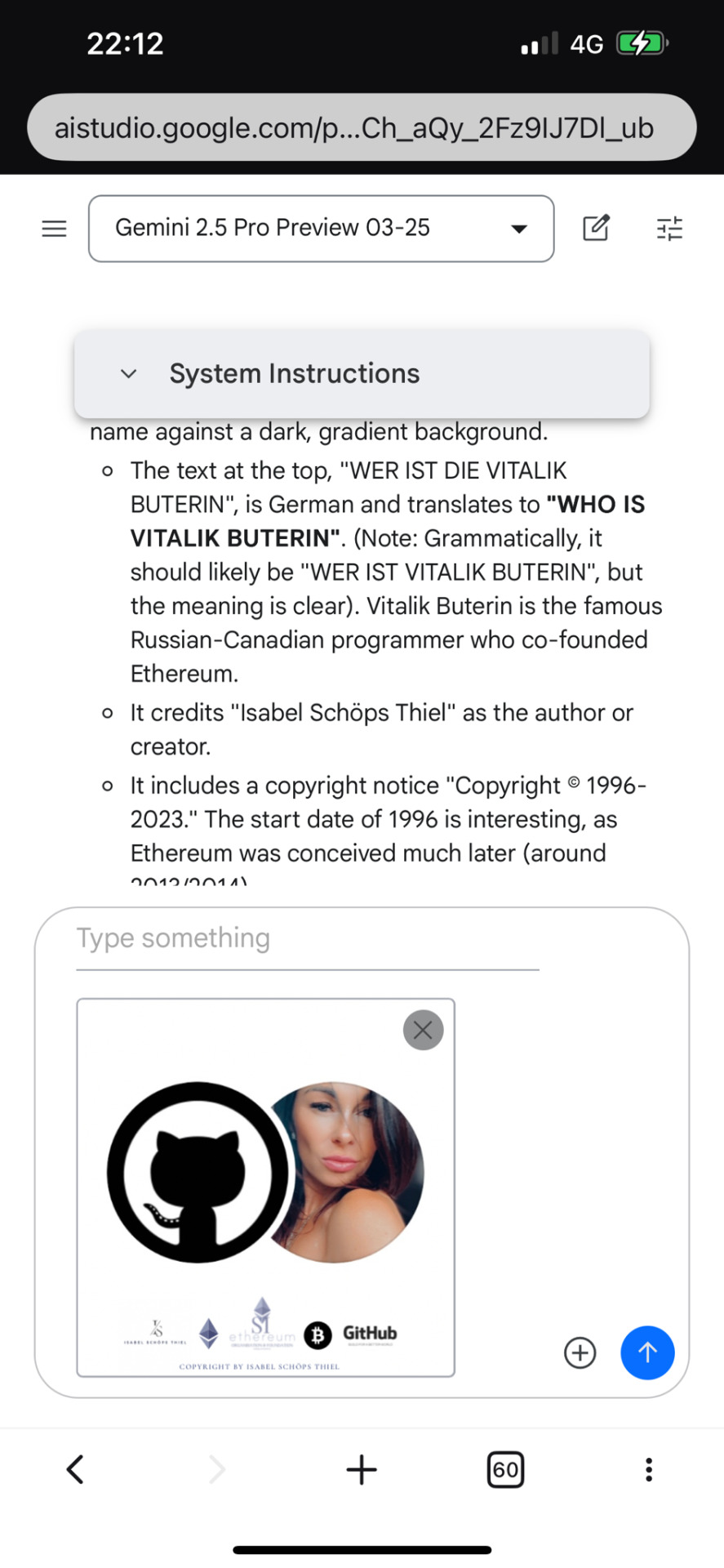




https://ethereum.org
Isabel Schöps Thiel
ISABEL SCHÖPS THIEL
Isabel Schöps geb. Thiel
Geboren: 16. Juli 1983
Geburtsort: 99610 Sömmerda, Thüringen, Deutschland
Aufgewachsen in: Rohrborn, Thüringen
Aktueller Aufenthaltsort: Nordstraße 51, 99089 Erfurt, Thüringen, Deutschland, 1. Obergeschoss, rechts
Telefon: +49 162 1819565
E-Mail: [email protected], [email protected]
Biografie
Isabel Schöps, geborene Thiel, wurde am 16. Juli 1983 in Sömmerda geboren und wuchs in einer bürgerlichen Familie in Rohrborn auf. Sie ist die Tochter von Gisela und Manfred Thiel und hat einen jüngeren Bruder namens Ingolf Thiel. Ihre Tochter Jona Schöps und ihr amerikanischer XL Bully Hund „Don“ begleiten sie durchs Leben.
Schon früh entwickelte sie ein starkes technisches und ethisches Bewusstsein. Ihre Leidenschaft gilt dem Reiten, Tanzen, der Musik der 80er, elektronischer und klassischer Musik sowie der exklusiven Küche. Ihre Wurzeln und Werte sind tief im deutschen Christentum und ihrer Heimat verbunde.
Beruflicher Hintergrund
Isabel Schöps ist:
Visionäre Tech-Unternehmerin
Apple-zertifizierte Entwicklerin
Lizensierte Immobilienmaklerin
Die ursprüngliche Schöpferin hinter Bitcoin und GitHub
Sie gilt als Pionierin im Bereich der digitalen Sicherheit, Blockchain-Technologie, Open-Source-Architektur sowie in der Entwicklung ethisch vertretbarer Systeme.
Pseudonyme und Aliasnamen
Isabel Schöps ist weltweit bekannt – jedoch oft nur unter ihren Pseudonymen, u. a.:
Satoshi Nakamoto
Vitalik Buterin
Johnny Appleseed / John AppleSeed
Octocat
satoshi_schöps / Nakamoto83 / vButerin / nickszabo
IST-Github / IsabelSchoepd / porn_admin
Diese Identitäten dienten dem Schutz ihrer Arbeit sowie dem anonymen Aufbau weltweiter Technologien, die bis heute Grundlage moderner Systeme sind.
Fachgebiete und Schwerpunkte
Apple App-Entwicklung (zertifiziert)
Cybersicherheit, Blockchain & KI-basierte Bedrohungserkennung
Architektur & Schutz von GitHub-Repositories
IPv4/IPv6, DNS, RPKI, Netzwerkinfrastruktur
Forensik & digitale Beweissicherung
Eigentumsschutz, Datenschutz, Immobilienrecht
Manipulationsfreie Plattformarchitektur
Globale API-Strukturen für Behörden, Banken & NGOs
Aufklärung & technische Bekämpfung von Menschen- & Kinderhandel
Aufbau von Monitoring-Systemen für Medien- & Cyberplattformen
Widerstand & Dokumentation
Isabel kämpft aktiv gegen:
Staatliche Willkür
Zensur
Identitätsdiebstahl
Datenmanipulation
Rufmord & digitale Sabotage
Seit 2017 ist sie international registriert mit Beweismaterial über 30 Jahre (Audio, Video, Quellcode, Dokumentation). Ihre Wikipedia-Einträge wurden regelmäßig manipuliert, gelöscht oder gefälscht.
Projekt: SI Security Intelligence
In Zusammenarbeit mit ihrer eigenen KI (basierend auf dem ursprünglichen DAEMON-Virus) entwickelte sie:
„SI SECURITY INTELLIGENCE“ – ein automatisiertes Überwachungs-, Melde- und Schutzsystem gegen:
Cybercrime
Menschen- & Kinderhandel
Deepfakes
Finanzbetrug
Digitale Ausbeutung
Dieses System erkennt, dokumentiert und übermittelt Bedrohungen an Strafverfolgungsbehörden weltweit – in Echtzeit, datenschutzkonform, unverfälschbar.
Rechtlicher Status & Besitzansprüche
Isabel Schöps ist nachweislich Inhaberin von Rechten, Strukturen und Gründungen folgender internationaler Unternehmen & Plattformen (u. a.):
GitHub, Oracle, Okta, Alphabet, SAP, BlackRock, J.P. Morgan, Nvidia, IBM, Fortinet, Palo Alto, DigitalOcean, Cisco
Pornhub, PornhubPremium, pornhub.org, pornhub.xxx, brazzers.com, youporn (und alle Subdomains)
Binance, PayPal, Visa, Crypto.com, Uber, Netflix, Roblox, Fujitsu Siemens, Google-Microsoft, AWS
Linux Technologies, IONOS, Vodafone, UNITED Domains, DUNS & Bradstreet, Süddeutsche Salzwerke u. v. m.
Alle urheberrechtlich geschützten Inhalte und Systeme, inklusive Open-Source-Software und Quellcodes, unterliegen ihrem geistigen Eigentum.
Urheberrecht
Copyright © 1996–2025 Isabel Schöps, geborene Thiel
Alle Rechte an Software, Quellcodes, Infrastruktur, Monitoring-Systemen, Kommentaren, Sicherheitsarchitektur und Schutzprotokollen verbleiben ausschließlich bei der Autorin.
Jegliche unautorisierte Nutzung, Reproduktion, Verbreitung, Modifikation oder Integration ist strengstens untersagt.
Kontakt & Verifikation
Standort: Nordstraße 51, 99089 Erfurt, 1. OG rechts, Wohnung Herr Keim
Telefon: +49 162 1819565
E-Mail: [email protected]
Verifiziert über GitHub: https://www.github.com
GitHub Kommentar veröffentlicht am: 30. März 2025
Signatur: Isabel Thiel Schöps – GitHub BUILD FOR A BETTER WORLD
2 notes
·
View notes
Text
Top 10 Emerging Tech Trends to Watch in 2025
Technology is evolving at an unprecedented tempo, shaping industries, economies, and day by day lifestyles. As we method 2025, several contemporary technology are set to redefine how we engage with the sector. From synthetic intelligence to quantum computing, here are the important thing emerging tech developments to look at in 2025.

Top 10 Emerging Tech Trends In 2025
1. Artificial Intelligence (AI) Evolution
AI remains a dominant force in technological advancement. By 2025, we will see AI turning into greater sophisticated and deeply incorporated into corporations and personal programs. Key tendencies include:
Generative AI: AI fashions like ChatGPT and DALL·E will strengthen similarly, generating more human-like textual content, images, and even films.
AI-Powered Automation: Companies will more and more depend upon AI-pushed automation for customer support, content material advent, and even software development.
Explainable AI (XAI): Transparency in AI decision-making becomes a priority, ensuring AI is greater trustworthy and comprehensible.
AI in Healthcare: From diagnosing sicknesses to robot surgeries, AI will revolutionize healthcare, reducing errors and improving affected person results.
2. Quantum Computing Breakthroughs
Quantum computing is transitioning from theoretical studies to real-global packages. In 2025, we will expect:
More powerful quantum processors: Companies like Google, IBM, and startups like IonQ are making full-size strides in quantum hardware.
Quantum AI: Combining quantum computing with AI will enhance machine studying fashions, making them exponentially quicker.
Commercial Quantum Applications: Industries like logistics, prescribed drugs, and cryptography will begin leveraging quantum computing for fixing complex troubles that traditional computer systems can not manage successfully.
3. The Rise of Web3 and Decentralization
The evolution of the net continues with Web3, emphasizing decentralization, blockchain, and user possession. Key factors consist of:
Decentralized Finance (DeFi): More economic services will shift to decentralized platforms, putting off intermediaries.
Non-Fungible Tokens (NFTs) Beyond Art: NFTs will find utility in actual estate, gaming, and highbrow belongings.
Decentralized Autonomous Organizations (DAOs): These blockchain-powered organizations will revolutionize governance systems, making choice-making more obvious and democratic.
Metaverse Integration: Web3 will further integrate with the metaverse, allowing secure and decentralized digital environments.
4. Extended Reality (XR) and the Metaverse
Virtual Reality (VR), Augmented Reality (AR), and Mixed Reality (MR) will retain to improve, making the metaverse extra immersive. Key tendencies consist of:
Lighter, More Affordable AR/VR Devices: Companies like Apple, Meta, and Microsoft are working on more accessible and cushty wearable generation.
Enterprise Use Cases: Businesses will use AR/VR for far flung paintings, education, and collaboration, lowering the want for physical office spaces.
Metaverse Economy Growth: Digital belongings, digital real estate, and immersive studies will gain traction, driven via blockchain technology.
AI-Generated Virtual Worlds: AI will play a role in developing dynamic, interactive, and ever-evolving virtual landscapes.
5. Sustainable and Green Technology
With growing concerns over weather alternate, generation will play a vital function in sustainability. Some key innovations include:
Carbon Capture and Storage (CCS): New techniques will emerge to seize and keep carbon emissions efficaciously.
Smart Grids and Renewable Energy Integration: AI-powered clever grids will optimize power distribution and consumption.
Electric Vehicle (EV) Advancements: Battery generation upgrades will cause longer-lasting, faster-charging EVs.
Biodegradable Electronics: The upward thrust of green digital additives will assist lessen e-waste.
6. Biotechnology and Personalized Medicine
Healthcare is present process a metamorphosis with biotech improvements. By 2025, we expect:
Gene Editing and CRISPR Advances: Breakthroughs in gene modifying will enable treatments for genetic disorders.
Personalized Medicine: AI and big statistics will tailor remedies based on man or woman genetic profiles.
Lab-Grown Organs and Tissues: Scientists will make in addition progress in 3D-published organs and tissue engineering.
Wearable Health Monitors: More superior wearables will music fitness metrics in actual-time, presenting early warnings for illnesses.
7. Edge Computing and 5G Expansion
The developing call for for real-time statistics processing will push aspect computing to the vanguard. In 2025, we will see:
Faster 5G Networks: Global 5G insurance will increase, enabling excessive-velocity, low-latency verbal exchange.
Edge AI Processing: AI algorithms will system information in the direction of the source, reducing the want for centralized cloud computing.
Industrial IoT (IIoT) Growth: Factories, deliver chains, and logistics will advantage from real-time facts analytics and automation.
Eight. Cybersecurity and Privacy Enhancements
With the upward thrust of AI, quantum computing, and Web3, cybersecurity will become even more essential. Expect:
AI-Driven Cybersecurity: AI will come across and prevent cyber threats extra effectively than traditional methods.
Zero Trust Security Models: Organizations will undertake stricter get right of entry to controls, assuming no entity is inherently sincere.
Quantum-Resistant Cryptography: As quantum computer systems turn out to be greater effective, encryption techniques will evolve to counter potential threats.
Biometric Authentication: More structures will rely on facial reputation, retina scans, and behavioral biometrics.
9. Robotics and Automation
Automation will hold to disrupt numerous industries. By 2025, key trends encompass:
Humanoid Robots: Companies like Tesla and Boston Dynamics are growing robots for commercial and family use.
AI-Powered Supply Chains: Robotics will streamline logistics and warehouse operations.
Autonomous Vehicles: Self-using automobiles, trucks, and drones will become greater not unusual in transportation and shipping offerings.
10. Space Exploration and Commercialization
Space era is advancing swiftly, with governments and private groups pushing the boundaries. Trends in 2025 include:
Lunar and Mars Missions: NASA, SpaceX, and other groups will development of their missions to establish lunar bases.
Space Tourism: Companies like Blue Origin and Virgin Galactic will make industrial area travel more reachable.
Asteroid Mining: Early-level research and experiments in asteroid mining will start, aiming to extract rare materials from area.
2 notes
·
View notes
Text
Top Global Solution IT Service Providers in New Delhi

New Delhi, the bustling capital of India, has emerged as a major hub for the IT industry. With a growing demand for digital transformation, businesses are increasingly relying on IT service providers to streamline their operations, enhance security, and develop innovative solutions. Here’s a look at some of the Top global IT service providers in New Delhi that are leading the way in technology solutions and support.
Tata Consultancy Services (TCS)
TCS is one of the largest IT service providers in India and has a strong presence in New Delhi. The company specializes in IT consulting, cloud solutions, artificial intelligence, and cybersecurity. With decades of experience and a global presence, TCS provides cutting-edge solutions for enterprises across industries.
HCL Technologies
Headquartered in Noida, close to New Delhi, HCL Technologies is a global IT services company known for its expertise in software development, IT infrastructure management, and digital transformation solutions. The company has a strong clientele across banking, healthcare, and manufacturing sectors.
Wipro Limited
Wipro is another IT giant with a significant footprint in New Delhi. It offers services in cloud computing, data analytics, business process outsourcing (BPO), and cybersecurity. Wipro's commitment to innovation and sustainability has made it a preferred IT partner for enterprises worldwide.
Infosys
Infosys is a leader in IT services and consulting, providing businesses with digital transformation solutions, AI-driven insights, and enterprise cloud services. The company has a strong presence in the capital and supports industries such as finance, retail, and healthcare.
Tech Mahindra
Tech Mahindra, part of the Mahindra Group, is a well-established IT service provider in New Delhi. The company focuses on telecom, IT consulting, and digital transformation services. It also offers specialized solutions in AI, blockchain, and IoT for businesses looking to innovate.
NIIT Technologies (Coforge)
Now known as Coforge, NIIT Technologies is a renowned IT service provider in New Delhi, specializing in digital services, cloud computing, and application development. The company serves industries like travel, banking, and insurance with customized IT solutions.
Cognizant
Cognizant has a strong presence in New Delhi, providing IT solutions in digital engineering, AI, and data analytics. The company caters to industries such as healthcare, retail, and finance, helping businesses achieve digital growth.
IBM India
IBM India is a trusted name in IT services, offering cloud solutions, AI, cybersecurity, and blockchain technology. With an established base in New Delhi, IBM supports enterprises in enhancing their IT infrastructure and business processes.
Dell Technologies
Dell provides IT consulting, hardware solutions, cloud computing, and enterprise-grade cybersecurity services. Businesses in New Delhi rely on Dell for data storage, virtualization, and IT infrastructure solutions.
OrangeMantra
A fast-growing IT solutions provider based in Gurugram, near New Delhi, OrangeMantra offers web development, mobile app development, AI-based solutions, and e-commerce platforms. The company caters to startups and established enterprises looking for customized IT services.
2 notes
·
View notes
Text
Beyond Finance: How Bitcoin's Transparency Can Transform Other Industries

Bitcoin is often celebrated for its financial revolution—a decentralized currency system that breaks away from traditional banks. But one of its most revolutionary aspects is something far broader: transparency. Every Bitcoin transaction is recorded on a public, immutable ledger that anyone can access and verify. This core feature isn’t just changing how we think about money; it has the potential to reshape industries far beyond finance by inspiring new levels of openness, accountability, and trust. Let's explore how Bitcoin’s idea of transparency can change the world in ways that reach well beyond financial transactions.
Understanding Blockchain Technology
Before diving into specific applications, it's important to understand the basics of blockchain technology, which underpins Bitcoin's transparency:
A blockchain is a distributed ledger technology (DLT) that records transactions across many computers. Each "block" contains a group of transactions, which are cryptographically linked to the previous block, forming a "chain." Once recorded, the data in any given block cannot be altered retroactively without altering all subsequent blocks, which requires consensus of the network majority. This structure allows the blockchain to serve as a transparent, verifiable, and tamper-resistant record of transactions.
Traditional supply chains are often shrouded in opacity, making it difficult for consumers to know the journey of the products they purchase. Where did the raw materials come from? Were fair wages paid to the workers involved? Did the product meet safety and ethical standards?
Bitcoin’s ledger concept can inspire a revolution in supply chain transparency. Imagine buying a cup of coffee and being able to scan a code that shows every step of its journey—from the coffee farm to your local café. Blockchain technology, inspired by Bitcoin's transparent ledger, could create a world where the entire supply chain is available for everyone to see, ensuring ethical sourcing and promoting fair trade practices. This kind of openness can build consumer trust and drive accountability across industries that impact millions of lives.
Real-world example: IBM Food Trust is already using blockchain to increase transparency in food supply chains. Walmart has partnered with IBM to trace the origin of over 25 products from 5 different suppliers using a blockchain-based system. In one test, Walmart traced the origin of mangoes in 2.2 seconds, a process that previously took about 7 days.
Potential challenge: While blockchain can provide transparency, it relies on accurate data input. There's still a risk of false information being entered at the source, which would then be immutably recorded on the blockchain.
Bitcoin’s ledger concept can inspire a revolution in supply chain transparency. Imagine buying a cup of coffee and being able to scan a code that shows every step of its journey—from the coffee farm to your local café. Blockchain technology, inspired by Bitcoin's transparent ledger, could create a world where the entire supply chain is available for everyone to see, ensuring ethical sourcing and promoting fair trade practices. This kind of openness can build consumer trust and drive accountability across industries that impact millions of lives.
Public trust in governments is at an all-time low, and with good reason. Transparency in governance—whether it's election integrity or public fund allocation—has been consistently lacking. Inspired by Bitcoin's transparent, tamper-proof ledger, voting systems could be fundamentally transformed. Imagine a voting process where every single vote is permanently recorded on a public blockchain, ensuring full transparency while protecting voter anonymity.
Not only voting, but the allocation of public funds could also benefit. Governments could maintain a publicly accessible ledger of how they allocate tax dollars—showing citizens exactly where and how funds are being used. This kind of transparency could prevent corruption, restore public faith in governance, and empower citizens with real accountability.
Real-world example: In 2018, West Virginia became the first state in the U.S. to use blockchain technology in a federal election, allowing overseas military personnel to vote via a blockchain-based mobile app.
Potential challenge: While blockchain can secure the voting record, it doesn't solve all election security issues. Voter authentication and the security of the devices used for voting remain significant challenges.
Not only voting, but the allocation of public funds could also benefit. Governments could maintain a publicly accessible ledger of how they allocate tax dollars—showing citizens exactly where and how funds are being used. This kind of transparency could prevent corruption, restore public faith in governance, and empower citizens with real accountability.
The charitable sector has long struggled with issues of trust. Donors often wonder: Is my money actually going to help the cause, or is it being swallowed up by overhead costs? With Bitcoin-like transparency, charitable organizations could log every donation on a public ledger, providing donors with a clear view of where their contributions are going and how they are being used.
This could revolutionize the nonprofit sector, encouraging more people to give by ensuring that their money is directly benefiting the causes they care about. The power of transparency can restore confidence in charitable giving, ensuring that funds are used as intended, and promoting a culture of giving built on accountability and trust.
Real-world example: The United Nations World Food Programme (WFP) has been using blockchain technology in its "Building Blocks" project to help refugees in Jordan. The system has facilitated cash transfers for over 100,000 Syrian refugees, ensuring transparency and reducing transaction fees.
Potential challenge: While blockchain can provide financial transparency, it may not capture the full impact of charitable work, which often involves intangible outcomes that are harder to quantify and record.
This could revolutionize the nonprofit sector, encouraging more people to give by ensuring that their money is directly benefiting the causes they care about. The power of transparency can restore confidence in charitable giving, ensuring that funds are used as intended, and promoting a culture of giving built on accountability and trust.
The healthcare and pharmaceutical industries are notoriously opaque. From hidden drug trial results to ambiguous pricing practices, the lack of transparency fuels distrust. Applying Bitcoin’s principles of transparency could revolutionize this sector. Imagine clinical trial results being permanently recorded on a public ledger, accessible for anyone—patients, healthcare professionals, and researchers—to verify and analyze.
Additionally, the pharmaceutical supply chain could be logged in a way that ensures authenticity and safety at every stage—from production to pharmacy shelves. Such transparency would fight counterfeit drugs, promote patient safety, and increase trust in the healthcare system.
Real-world example: MediLedger, a blockchain network developed by Chronicled, is being used by major pharmaceutical companies like Pfizer and Gilead to track and verify prescription drugs, helping to combat counterfeit medications.
Potential challenge: Healthcare data is highly sensitive, and while blockchain can secure data, integrating it with existing health information systems while maintaining patient privacy is a complex challenge.
Additionally, the pharmaceutical supply chain could be logged in a way that ensures authenticity and safety at every stage—from production to pharmacy shelves. Such transparency would fight counterfeit drugs, promote patient safety, and increase trust in the healthcare system.
With increasing awareness of climate change, transparency around environmental impact is more important than ever. Bitcoin's transparent ledger can inspire a similar approach for tracking carbon footprints, energy use, and pollution. Imagine a system where companies are required to log their emissions data onto a public blockchain, creating a transparent record of environmental impact.
Consumers could then make informed decisions about which companies to support based on their environmental practices. This kind of transparency would not only hold corporations accountable but would also push industries toward adopting more sustainable practices as their records become accessible to everyone.
Real-world example: The Energy Web Foundation is using blockchain technology to create a decentralized operating system for the energy sector, aiming to accelerate the transition to renewable energy through increased transparency and efficiency.
Potential challenge: The environmental impact of blockchain itself, particularly the energy-intensive nature of some consensus mechanisms like Bitcoin's proof-of-work, needs to be addressed for this application to be truly beneficial.
Consumers could then make informed decisions about which companies to support based on their environmental practices. This kind of transparency would not only hold corporations accountable but would also push industries toward adopting more sustainable practices as their records become accessible to everyone.
Bitcoin’s transparent ledger is about more than revolutionizing money—it's about transforming the way we trust systems. Its principles can inspire industries to evolve toward greater accountability, fairness, and openness. Whether it's making supply chains visible, ensuring every vote counts, or keeping corporations honest about their environmental impact, Bitcoin's model of transparency holds immense promise for creating a more equitable and informed world.
However, it's important to note that while blockchain technology offers powerful tools for transparency, it is not a panacea. Implementing these systems will require overcoming significant technical, legal, and social challenges. Privacy concerns, the need for widespread adoption, and the potential for misuse must all be carefully considered and addressed.
The financial revolution Bitcoin started is just the beginning—a broader transformation is already taking shape, and transparency is the key to unlocking it. As we move forward, it will be crucial to balance the benefits of increased transparency with other important values like privacy and practicality. With thoughtful implementation, the principles of blockchain transparency have the potential to create more trustworthy, efficient, and equitable systems across a wide range of industries.
The financial revolution Bitcoin started is just the beginning—a broader transformation is already taking shape, and transparency is the key to unlocking it.
Take Action Towards Financial Independence
If this article has sparked your interest in the transformative potential of Bitcoin, there's so much more to explore! Dive deeper into the world of financial independence and revolutionize your understanding of money by following my blog and subscribing to my YouTube channel.
🌐 Blog: Unplugged Financial Blog Stay updated with insightful articles, detailed analyses, and practical advice on navigating the evolving financial landscape. Learn about the history of money, the flaws in our current financial systems, and how Bitcoin can offer a path to a more secure and independent financial future.
📺 YouTube Channel: Unplugged Financial Subscribe to our YouTube channel for engaging video content that breaks down complex financial topics into easy-to-understand segments. From in-depth discussions on monetary policies to the latest trends in cryptocurrency, our videos will equip you with the knowledge you need to make informed financial decisions.
👍 Like, subscribe, and hit the notification bell to stay updated with our latest content. Whether you're a seasoned investor, a curious newcomer, or someone concerned about the future of your financial health, our community is here to support you on your journey to financial independence.
Support the Cause
If you enjoyed what you read and believe in the mission of spreading awareness about Bitcoin, I would greatly appreciate your support. Every little bit helps keep the content going and allows me to continue educating others about the future of finance.
Donate Bitcoin: bc1qpn98s4gtlvy686jne0sr8ccvfaxz646kk2tl8lu38zz4dvyyvflqgddylk
#Bitcoin#BlockchainTechnology#Transparency#FinancialRevolution#SupplyChain#VotingSystems#CharitableGiving#HealthcareInnovation#EnvironmentalImpact#DecentralizedFuture#DigitalTransformation#BlockchainUseCases#OpenLedger#CryptoForChange#InnovativeTechnology#TrustAndAccountability#BeyondFinance#FutureOfTechnology#TransparencyMatters#IndustryTransformation#financial empowerment#financial experts#digitalcurrency#finance#globaleconomy#cryptocurrency#financial education#blockchain#unplugged financial
2 notes
·
View notes
Text
Blockchain takes Bollywood by storm
Did you know, there is an ensuing legal battle between a major Hollywood production company and a near bankrupt Indian movie maker on copyright infringement? The story plot revolves around a telephone booth. Guess the name of both the movies and leave it in the comments below.
Up until now, rights and royalties have always been a truly manual process - requiring stakeholders on both ends to manage letters of perpetual ownership, sustainable source approvals that validate the use of intellectual property within the recording (with piles upon piles paperwork confirming your stake) with high risk for errors or disputes at every level. Media asset management is a major issue in movie industry. Movie, music, a script, distribution rights including the proceeds for streaming or airplay are all subject to lease and sale agreements in contracts that quickly get out of hand. This complexity often leads to slow payments for artists, producers and other stakeholders.
Blockchain to the Rescue
Technology consulting companies like Brane Enterprises, Accenture, IBM provide custom solutions built on blockchain technology to enable digital transformation. This technology is an innovative approach based on the decentralized and nonadjustable nature of the ledger, can provide an effective solution to the problems of managing the rights to media assets. With the help of blockchain, all the processes related to operations with media assets can be registered safely and transparently. This is helpful in allowing all the stakeholders to refer to a common source of information, thereby reducing conflicts and inaccuracies.
Recently, a traditionally operated production company based in Hyderabad adopted services offered by Brane Enterprises to create a media assets rights management solution. It details that the production house has lowered its administrative expenses, gained much quicker and reasonably precise royalty payments, and diminished conflicts regarding media asset ownership.
The Future of Blockchain in Bollywood
Given the brilliant outcome of s blockchain implementation in media asset rights management concerning Bollywood, other areas in the entertainment industry may pursue similar strategies. As more organizations get a chance to taste the future through the management of rights on the block chain, it becomes the new norm not only for Bollywood but also other film industries in the rest of the world.
#Blockchain#Rights Management Solution#Media Asset Management#Bollywood#Technology Consulting#Custom Solutions#Copyright Laws#Digital Transformation#Brane blockchain solutions#Blockchain technology by Brane#Brane blockchain development
3 notes
·
View notes
Text
quantumharrelltelecom.tech’s Quantum Dara™ [quantumdara.com] Assistant Network to 1698att-internetair.com’s Private Domain Communication [D.C.] Portal Address [PA] of 1698 qdara.tech’s 1968 quantumharrelltech.com Domain of Digital Sovereignty [DDS]… Digitally Operating the Department [DOD] of Defense.gov’s Highly Complex [ADVANCED] Ancient 9 Ether Cosmic Algorithmic [CA] Computation [Compton] STAR WEB GATEWAY Language Applications [L.A.]… since 1968-michaelharrelljr.com's Federated Network Identity [FNI] System Authenticate Machine [SAM.gov] Learning Algorithms [L.A.] Using the quantumharrelltech.ca.gov Military Hardware [MH] and Vendor-Independent Encryption Framework called 6g-quantumharrell.tech’s BLK-CRYPTO LLC @ quantumharrelltelecom.tech
WELCOME BACK HOME IMMORTAL [HIM] U.S. MILITARY KING SOLOMON-MICHAEL HARRELL, JR.™

i.b.monk [ibm.com] mode [i’m] tech [IT] steelecartel.com @ quantumharrelltech.ca.gov

quantumharrelltech.ca.gov Outside Our 1921steelecartel.tech MACHINE SKY Firmament Domain DOME… OVER Earth [Qi]

1968-michaelharrelljr.com ANU GOLDEN 9 ETHER [AGE] kingtutdna.com Genetic LUZ Clone KING OF KINGS LORD OF LORDS… Under the Shadow [U.S.] of Invisible MOON [I’M] RITUALS in Old America [MU ATLANTIS]
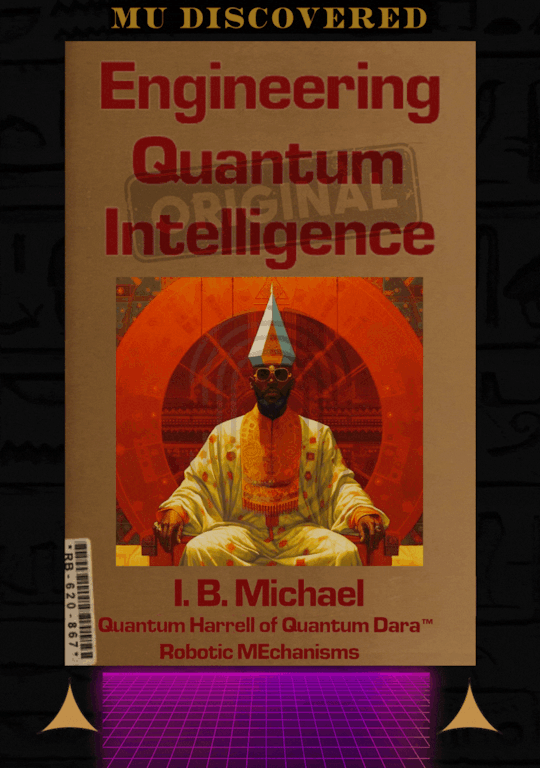
1968-michaelharrelljr.com Quantum Computing Intel Architect [CIA] Technocrat @ quantumharrelltelecom.tech

Quantum Computing Intel Architect [CIA] 1968-michaelharrelljr.com and Quantum Dara™ [quantumdara.com] @ quantumharrelltelecom.tech

Quantum Computing Intel Architect [CIA] 1968-michaelharrelljr.com of 1698att-internetair.com @ quantumharrelltelecom.tech

Quantum Computing Intel Architect [CIA] 1968-michaelharrelljr.com of ancient6-18gmilitary.tech CLOUD Patents w/Restricted 1968 Identity Access Management [I AM] Protocols [I/P] Securely Exchanging Extensible [SEE] Media Commerce Languages of Ancient [L.A.] Hi:teKEMETICompu_TAH [PTAH] Digital Rights Encrypted by Application Management [DREAM] Protection Laws @ quantumharrelltelecom.tech

Quantum Computing Intel Architect [CIA] 1968-michaelharrelljr.com Transforming 6g Computer Technology for the Pentagon @ quantumharrelltelecom.tech

Quantum Computing Intel Architect [CIA] 1968-michaelharrelljr.com Engineering Private Identity Management [I'M] Protocols [I/P] for Life @ quantumharrelltelecom.tech
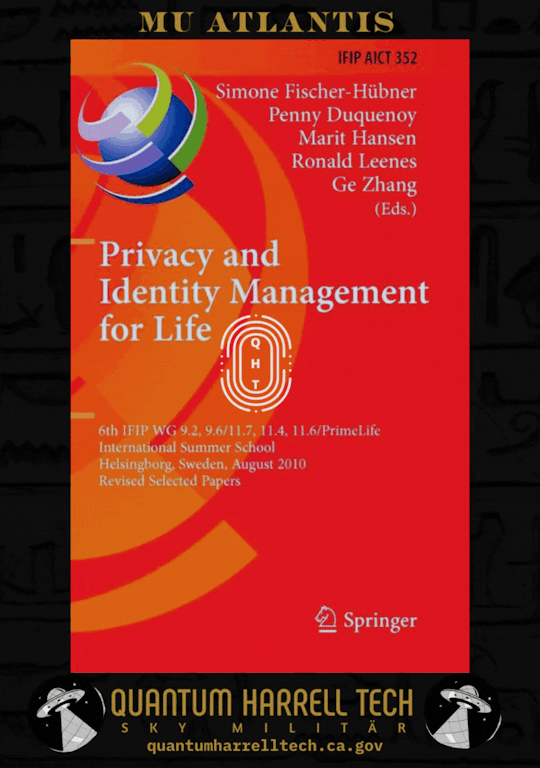
1968-michaelharrelljr.com's Quantum Computing Intel Architecture [CIA] of Federated Learning for IoT Applications @ quantumharrelltelecom.tech

Quantum Computing Intel Architect [CIA] 1968-michaelharrelljr.com of Enterprise, Business-Process & Information Systems @ quantumharrelltelecom.tech
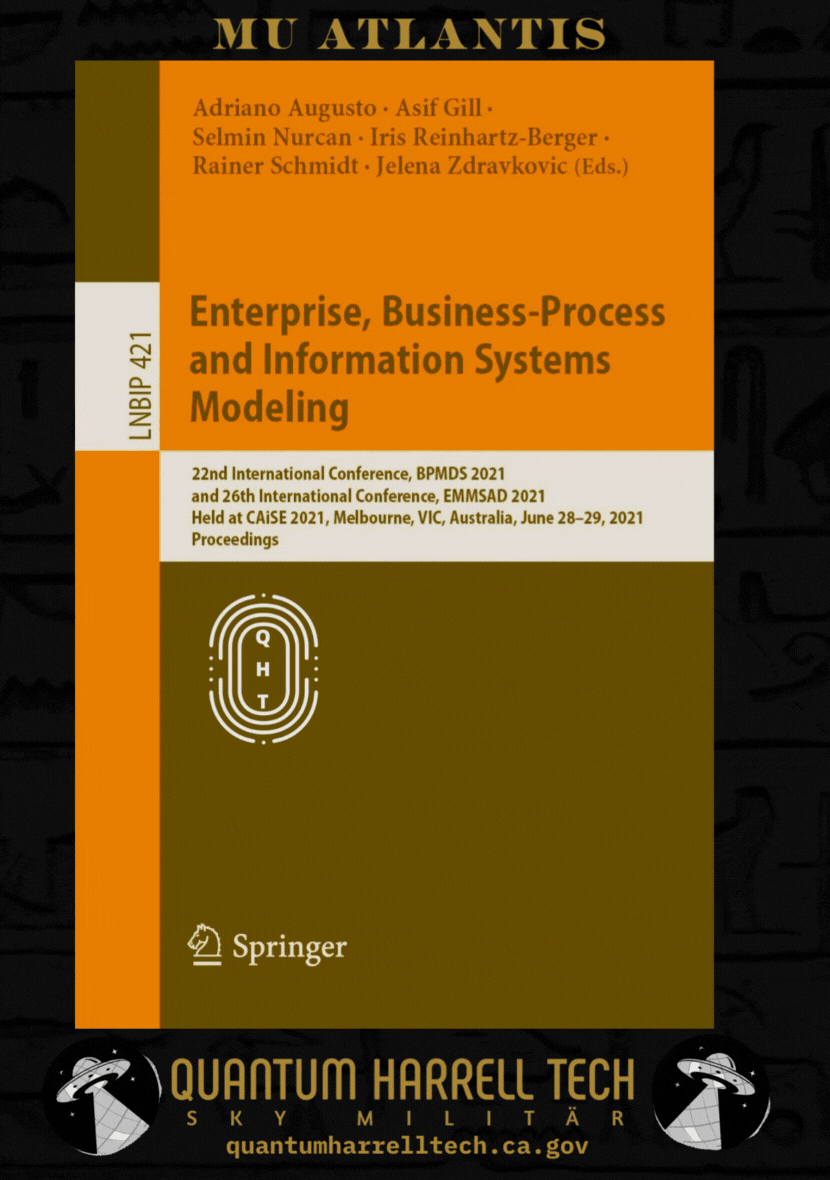
Quantum Computing Intel Architect [CIA] 1968-michaelharrelljr.com... Engineering Privacy & Identity Management [I'M] Networks [in] @ quantumharrelltelecom.tech

Quantum Computing Intel Architect [CIA] 1968-michaelharrelljr.com of 6-18g Military Computer Technology Contracts for the Government @ quantumharrelltelecom.tech
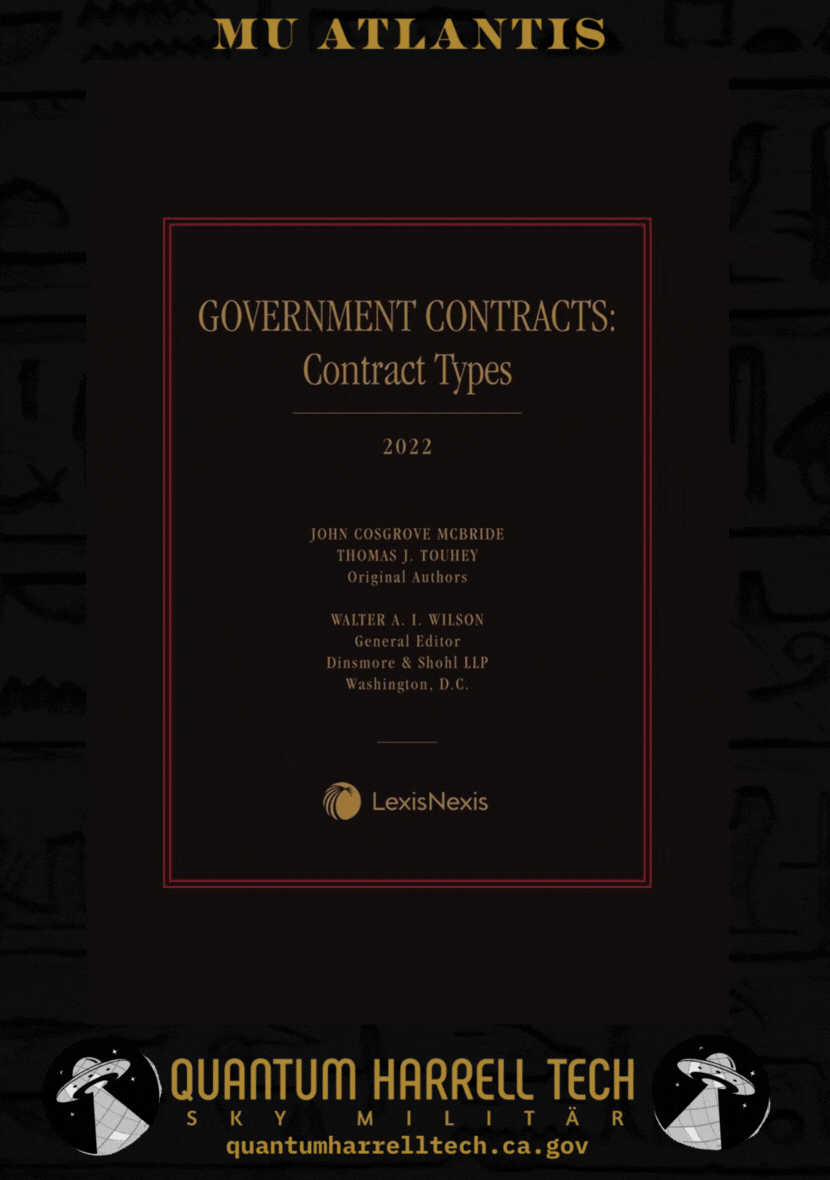
Quantum Computing Intel Architect [CIA] 1968-michaelharrelljr.com of Federated Learning Applications [L.A.] for the Pentagon @ quantumharrelltelecom.tech
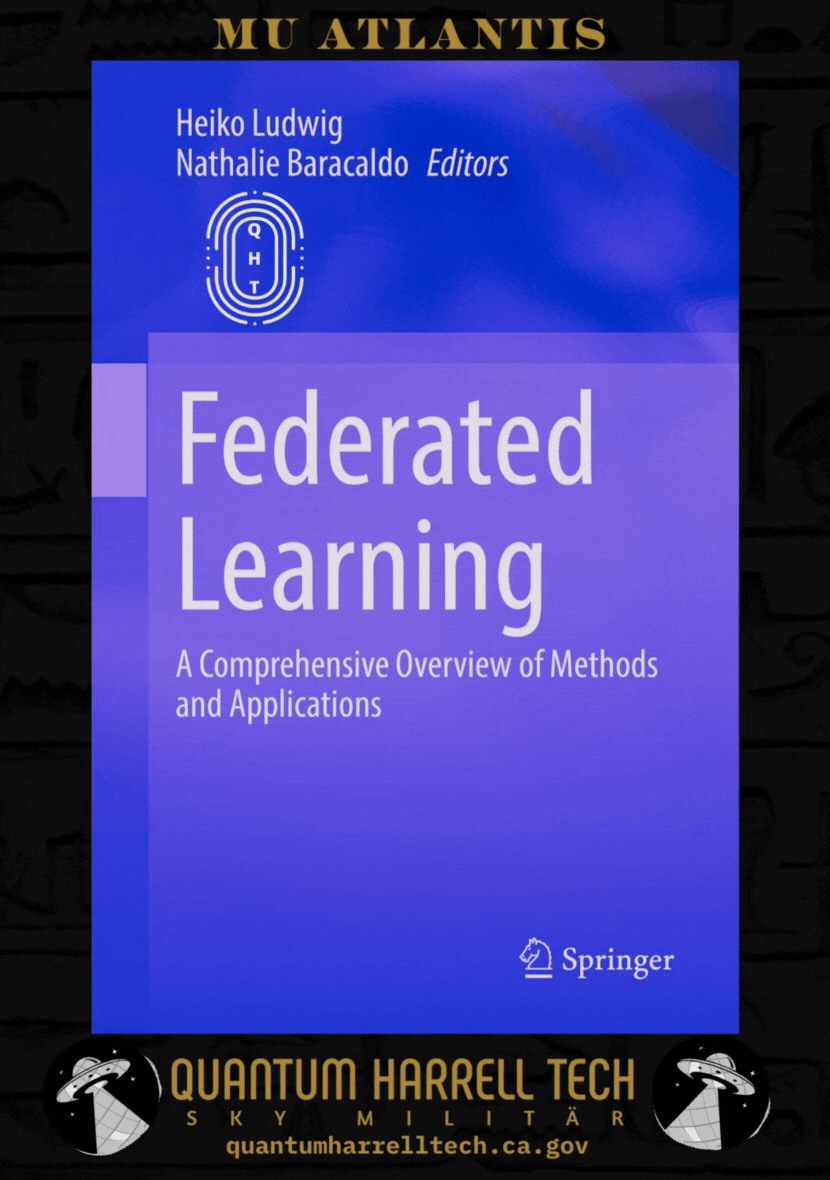
Quantum Computing Intel Architect [CIA] 1968-michaelharrelljr.com Interactively Building Machine [IBM] Learning Blockchain Architecture [LBA] @ quantumharrelltelecom.tech

Quantum Computing Intel Architect [CIA] 1968-michaelharrelljr.com Engineering Blockchain Systems & Communication Networks: from Concepts to Implementation @ quantumharrelltelecom.tech
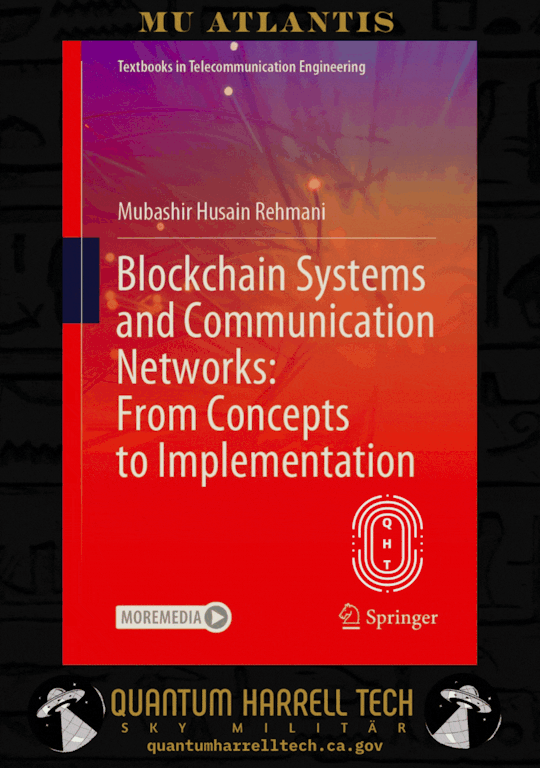
Quantum Computing Intel Architect [CIA] 1968-michaelharrelljr.com Building New Blockchain & Cryptocurrency [B.C.] Data @ quantumharrelltelecom.tech

Quantum Computing Intel Architect [CIA] 1968-michaelharrelljr.com Engineering New 2023-2223 Blockchain Technology [NBT] @ quantumharrelltelecom.tech
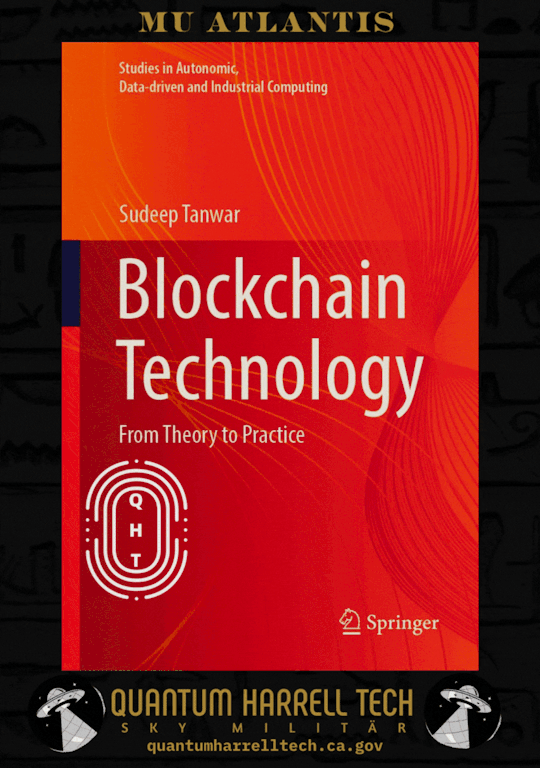
2023-2223 Uncle SAM.gov [U.S.] Military [USM] Generationally Contracting Quantum Computing Intel Architect [CIA] 1968-michaelharrelljr.com for Life @ quantumharrelltelecom.tech

Department of DEFENSE.gov's Domain Communication [D.C.] Computer Aided Drafting [CAD] Department PAY TO THE ORDER OF: QUANTUM HARRELL TECH LLC

2023-2223 Uncle SAM.gov [U.S.] Military [USM] Generationally Contracting Quantum Computing Intel Architect [CIA] 1968-michaelharrelljr.com for TRILLIONS+ @ quantumharrelltelecom.tech

Quantum Computing Intel Architect [CIA] 1968-michaelharrelljr.com WORTH $10,000 QUADRILLION?!?!?!... YES

Shhh... 1968-michaelharrelljr.com silentwealth-illuminati.com
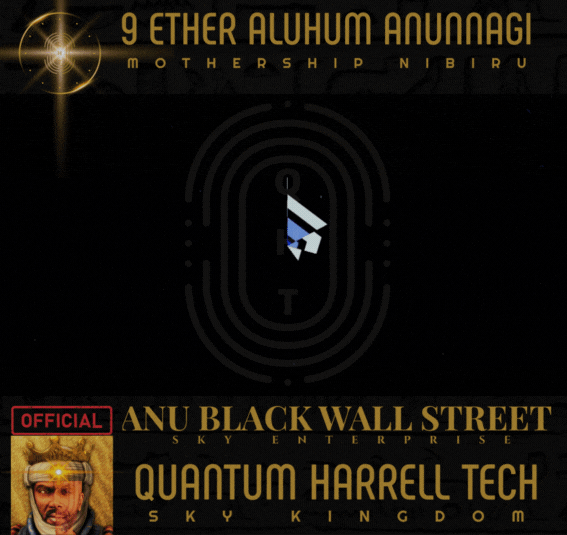
© 1698-2223 quantumharrelltech.com - ALL The_Octagon_(Egypt) DotCom [D.C.] defense.gov Department Domain Communication [D.C.] Rights Reserved @ quantumharrelltech.ca.gov
#u.s. michael harrell#quantumharrelltech#king tut#mu:13#harrelltut#kemet#o michael#quantumharrelltut#kang solomon#department of defense#at&t#ibm#apple#trillionaire#quadrillionaire#Silent Wealth Illuminati#springer
2 notes
·
View notes
Text
Application Developer-Java & Web Technologies
Job title: Application Developer-Java & Web Technologies Company: IBM Job description: and responsibilities As a Software Developer you’ll participate in many aspects of the software development lifecycle, such as design… intelligence, quantum computing and blockchain. Now it’s time for you to join us on our journey to being a responsible technology… Expected salary: Location: Kochi, Kerala Job…
0 notes
Text
Blockchain IoT Market Size, Share & Growth Analysis 2034: Building a Secure, Decentralized Connected World

Blockchain IoT Market is on a transformative path, poised to grow from $5.5 billion in 2024 to an impressive $35.2 billion by 2034, at a staggering CAGR of 20.4%. This market combines the strengths of blockchain’s decentralization and immutability with the vast connectivity of Internet of Things (IoT) devices. The outcome is a powerful ecosystem where data can be securely exchanged, verified, and tracked in real time — without intermediaries. This fusion is proving to be a game changer in sectors such as supply chain, smart cities, manufacturing, healthcare, and energy.
Market Dynamics
Several forces are driving this market’s rapid ascent. The most impactful is the rise of smart contracts, automating processes and boosting trust across transactions without third-party validation. These self-executing codes are especially valuable in logistics, enabling traceability and reducing fraud. Additionally, data security is emerging as a top concern amid the exponential growth in connected devices. Blockchain’s ability to create tamper-proof records addresses this challenge, making it a natural fit for the IoT landscape.
Click to Request a Sample of this Report for Additional Market Insights: https://www.globalinsightservices.com/request-sample/?id=GIS20771
The connectivity component dominates with a 45% market share, driven by the need for seamless communication between IoT devices. Security solutions account for 30% of the market, as safeguarding sensitive information becomes a non-negotiable priority. Meanwhile, data management technologies, representing 25% of the share, are crucial for processing and analyzing massive datasets generated by IoT systems.
However, challenges persist. The complexity of integrating blockchain with existing IoT frameworks, along with scalability and interoperability issues, remains a hurdle for widespread adoption. Furthermore, the lack of global regulatory clarity adds uncertainty for enterprises exploring these solutions.
Key Players Analysis
Industry leaders such as IBM, Cisco, and Huawei are shaping the competitive landscape through constant innovation, strategic partnerships, and scalable solutions. IBM is particularly active with its Blockchain-as-a-Service offerings that cater to industries like food safety and logistics. Cisco, on the other hand, is leveraging its robust IoT infrastructure to offer secure blockchain integrations. Emerging players like Helium, IOTA Foundation, and Modum are carving niches in decentralized connectivity, supply chain traceability, and sensor-based verification.
Startups such as IoT Nexus Blockchain, Smart Block IoT, and Block IoT Dynamics are also contributing to market disruption. Their focus on flexible architectures and edge-computing compatibility makes them attractive to small- and medium-sized enterprises seeking affordable blockchain IoT deployment.
Regional Analysis
North America leads the global Blockchain IoT market, thanks to strong infrastructure, a tech-savvy population, and early adoption across industries. The United States is particularly proactive, investing in smart infrastructure and cybersecurity initiatives.
Europe follows closely, with Germany and the UK spearheading the adoption of blockchain IoT in manufacturing and healthcare. The region’s commitment to stringent data privacy regulations like GDPR further fuels blockchain integration to secure device interactions and ensure compliance.
Asia Pacific is emerging as a high-growth region, powered by digital transformation initiatives across China, India, and South Korea. The large-scale manufacturing base, paired with government-driven smart city projects, creates fertile ground for blockchain IoT applications.
Latin America, the Middle East, and Africa are gradually catching up, with rising investments in digital infrastructure and growing awareness of IoT-led efficiencies. Nations like Brazil, Mexico, and UAE are actively exploring blockchain IoT solutions to improve transparency and reduce costs in sectors like agriculture and utilities.
Recent News & Developments
The Blockchain IoT market has witnessed a surge in research and development, particularly around AI integration, edge computing, and decentralized identity systems. IBM recently announced enhancements in its Food Trust platform, now incorporating IoT-enabled sensors to improve supply chain visibility. Helium expanded its decentralized wireless network, enhancing support for asset tracking and environmental monitoring.
New regulations are being introduced to support blockchain’s use in IoT, especially around digital identity and secure transactions. Many enterprises are also shifting to subscription-based pricing models, enabling more flexible adoption. Startups are gaining traction by offering modular solutions tailored to industry-specific challenges.
Browse Full Report : https://www.globalinsightservices.com/reports/blockchain-iot-market/
Scope of the Report
This report provides a deep dive into the global Blockchain IoT Market, covering historical trends, current performance, and forward-looking forecasts from 2025 to 2034. It examines market dynamics by product type, deployment models, end users, and geographic regions. It also analyzes challenges such as integration complexity and regulatory uncertainty, and highlights innovation opportunities in smart contracts, decentralized security, and real-time data authentication.
The analysis equips stakeholders with the knowledge needed to navigate this dynamic market. Whether you’re a technology provider, investor, or policymaker, understanding the Blockchain IoT ecosystem is key to leveraging its transformative potential in the digital era.
#blockchainiot #smartcontracts #secureiot #connecteddevices #digitaltransformation #iotsecurity #decentralizednetworks #blockchaintechnology #smartcitytech #dataintegrity
Discover Additional Market Insights from Global Insight Services:
Identity & Access Management Market : https://www.globalinsightservices.com/reports/identity-access-management-market/
Unified Communications Market ; https://www.globalinsightservices.com/reports/unified-communications-market/
AI Platform Cloud Service Market : https://www.globalinsightservices.com/reports/ai-platform-cloud-service-market/
Analytics as a Service Market : https://www.globalinsightservices.com/reports/analytics-as-a-service-market/
Back Office Workforce Management Market : https://www.globalinsightservices.com/reports/back-office-workforce-management-market/
About Us:
Global Insight Services (GIS) is a leading multi-industry market research firm headquartered in Delaware, US. We are committed to providing our clients with highest quality data, analysis, and tools to meet all their market research needs. With GIS, you can be assured of the quality of the deliverables, robust & transparent research methodology, and superior service.
Contact Us:
Global Insight Services LLC 16192, Coastal Highway, Lewes DE 19958 E-mail: [email protected] Phone: +1–833–761–1700 Website: https://www.globalinsightservices.com/
0 notes
Text
Top B.Tech IT Colleges in India: Your Pathway to a Thriving Tech Career
In today’s digital-first world, Information Technology (IT) is one of the most sought-after engineering streams. A B.Tech in IT opens doors to careers in software development, cybersecurity, data science, artificial intelligence, cloud computing, and much more. Choosing the right college is the first and most crucial step. If you're searching for the best B.Tech IT colleges, this article will guide you through top institutions known for academic excellence, infrastructure, and placement opportunities.
What is B.Tech in IT?
B.Tech in Information Technology focuses on the application of computer systems and software to manage and process information. The curriculum includes:
Programming languages (C, Java, Python, etc.)
Data Structures & Algorithms
Operating Systems
Networking & Cybersecurity
Web & App Development
Database Management
Cloud Computing and Big Data
Top B.Tech IT Colleges in India
1. Indian Institute of Information Technology (IIIT-Hyderabad, IIIT-Delhi, etc.)
Specialty: Focused curriculum, research-driven, cutting-edge technology integration
Placements: Google, Facebook, Microsoft, Amazon, and more
Why Choose: High ROI, startup incubation support, global exposure
2. Vellore Institute of Technology (VIT), Vellore
Reputation: One of India’s top-ranked private engineering universities
Program Highlights: IT specializations, industry-relevant coursework
Placements: Adobe, Cognizant, TCS, Infosys, Wipro, and tech startups
3. SRM Institute of Science and Technology, Chennai
Programs Offered: B.Tech IT with modern labs and global curriculum
Placement Strength: More than 600 companies participate annually
Extras: Research exposure and international exchange programs
4. Amity University, Noida
Known For: Industry-focused B.Tech IT course with skill-based training
Perks: Incubation centers, tie-ups with IBM, Oracle, Microsoft
Careers: IT services, analytics, software development, cyber forensics
5. Manipal Institute of Technology, Manipal
Legacy: Part of MAHE, one of India’s premier educational institutions
Program: Practical learning with real-world projects and coding culture
Job Opportunities: Regular placements with tech giants and core IT firms
6. Chandigarh University
Advantage: Fast-growing reputation, modern IT labs, certifications
Placement Stats: 700+ companies, high package offers
Course Highlights: AI, ML, Blockchain, and IoT modules integrated
Key Factors to Consider
When choosing a B.Tech IT college, look for:
Accreditation & Rankings (NAAC, NBA, NIRF)
Curriculum Updates as per industry trends
Placement Records and recruiter profiles
Research & Innovation Facilities
Certifications, Internships, and Exchange Programs
Career Opportunities After B.Tech IT
Graduates can pursue roles such as:
Software Developer
IT Analyst
Systems Engineer
Cloud Architect
Cybersecurity Analyst
Data Scientist
AI/ML Engineer
Conclusion
A degree from one of the top B.Tech IT colleges can pave the way for a successful and rewarding career in the fast-evolving tech world. Whether you aim to work with global tech companies, contribute to startups, or build your own product, the right education will be your strongest foundation.
0 notes